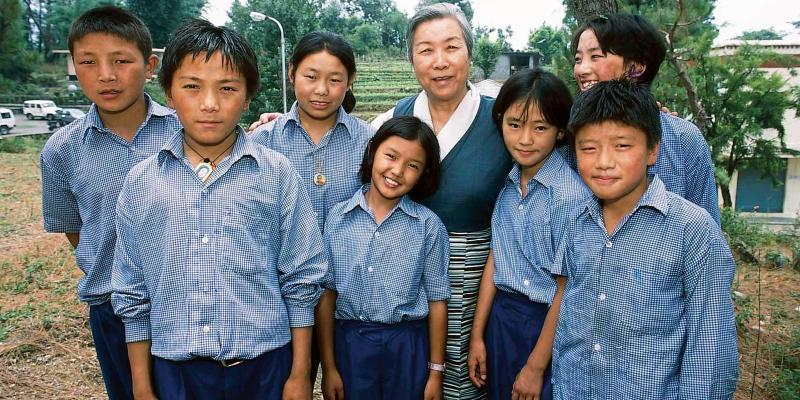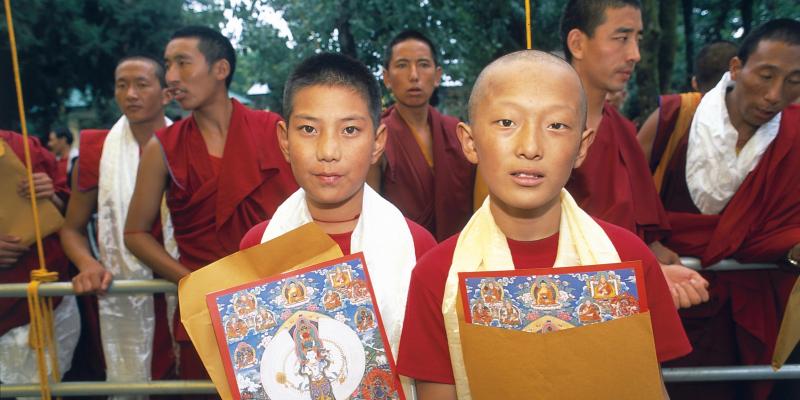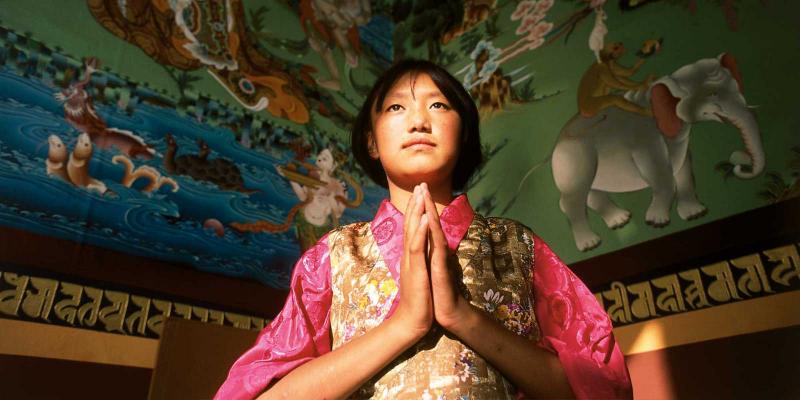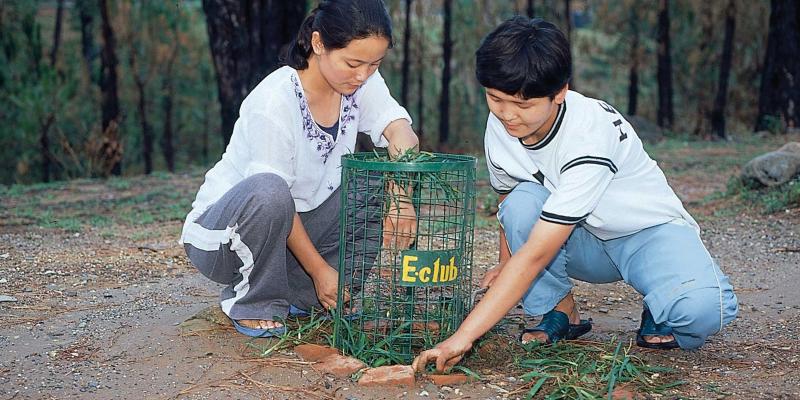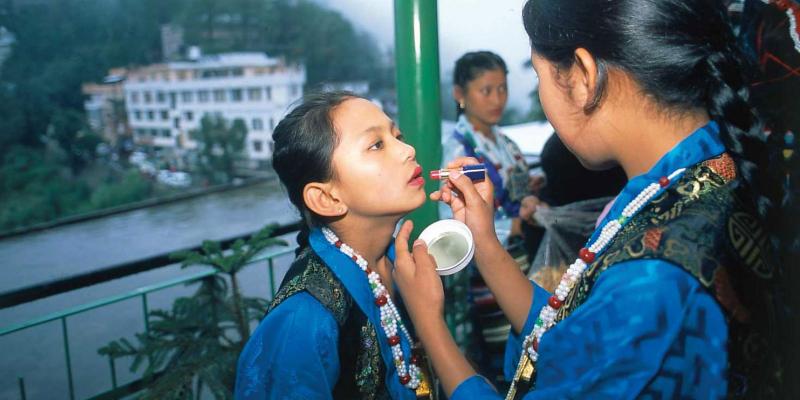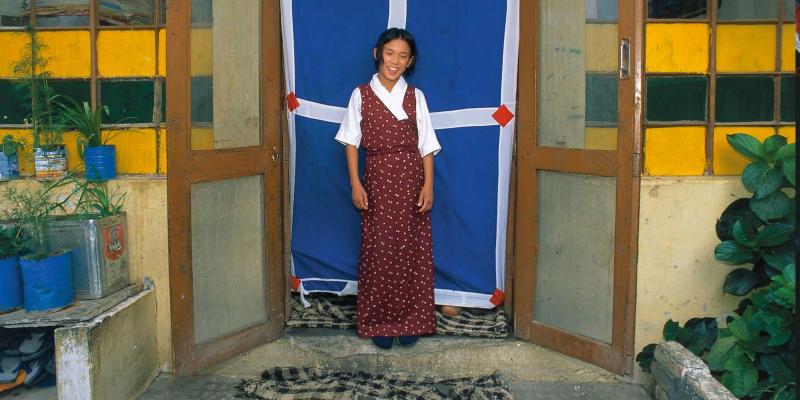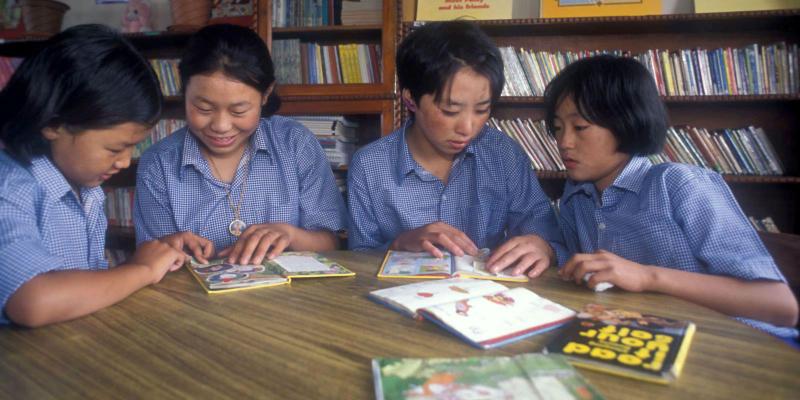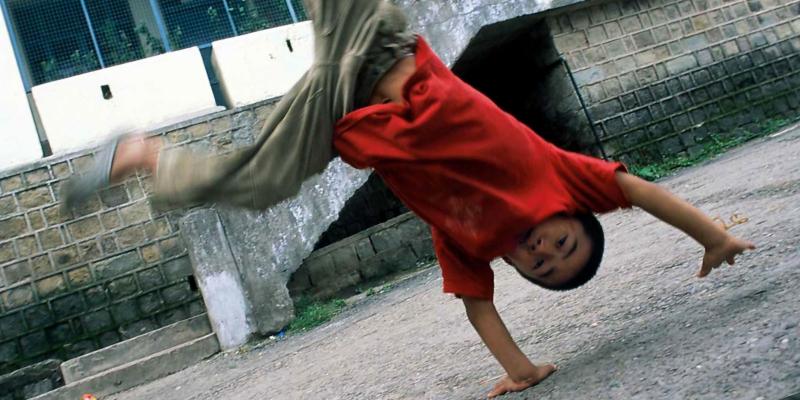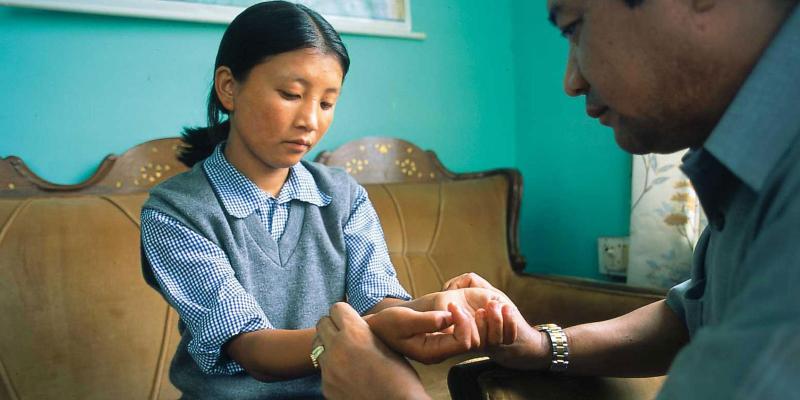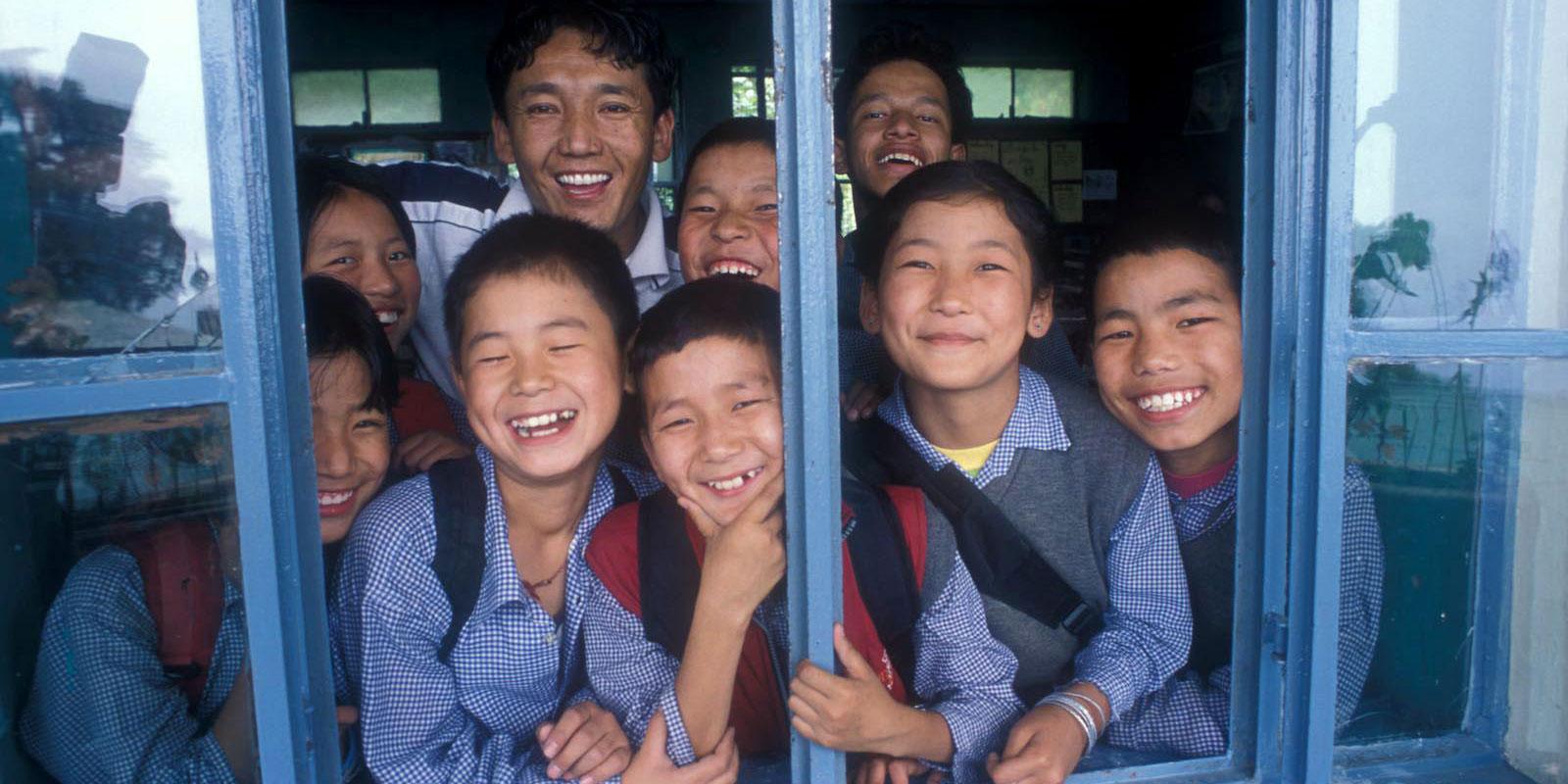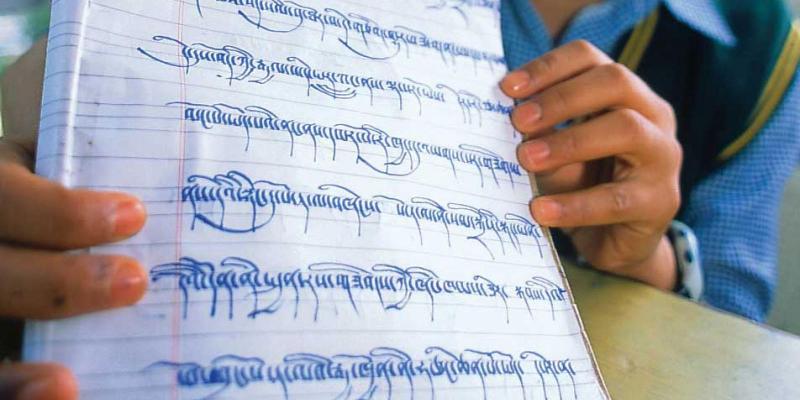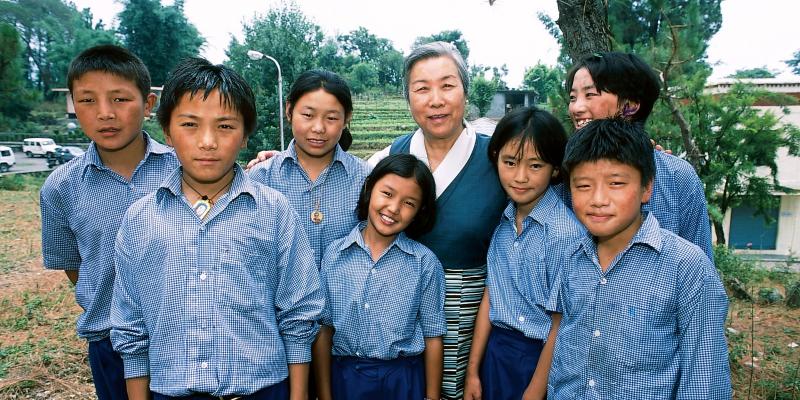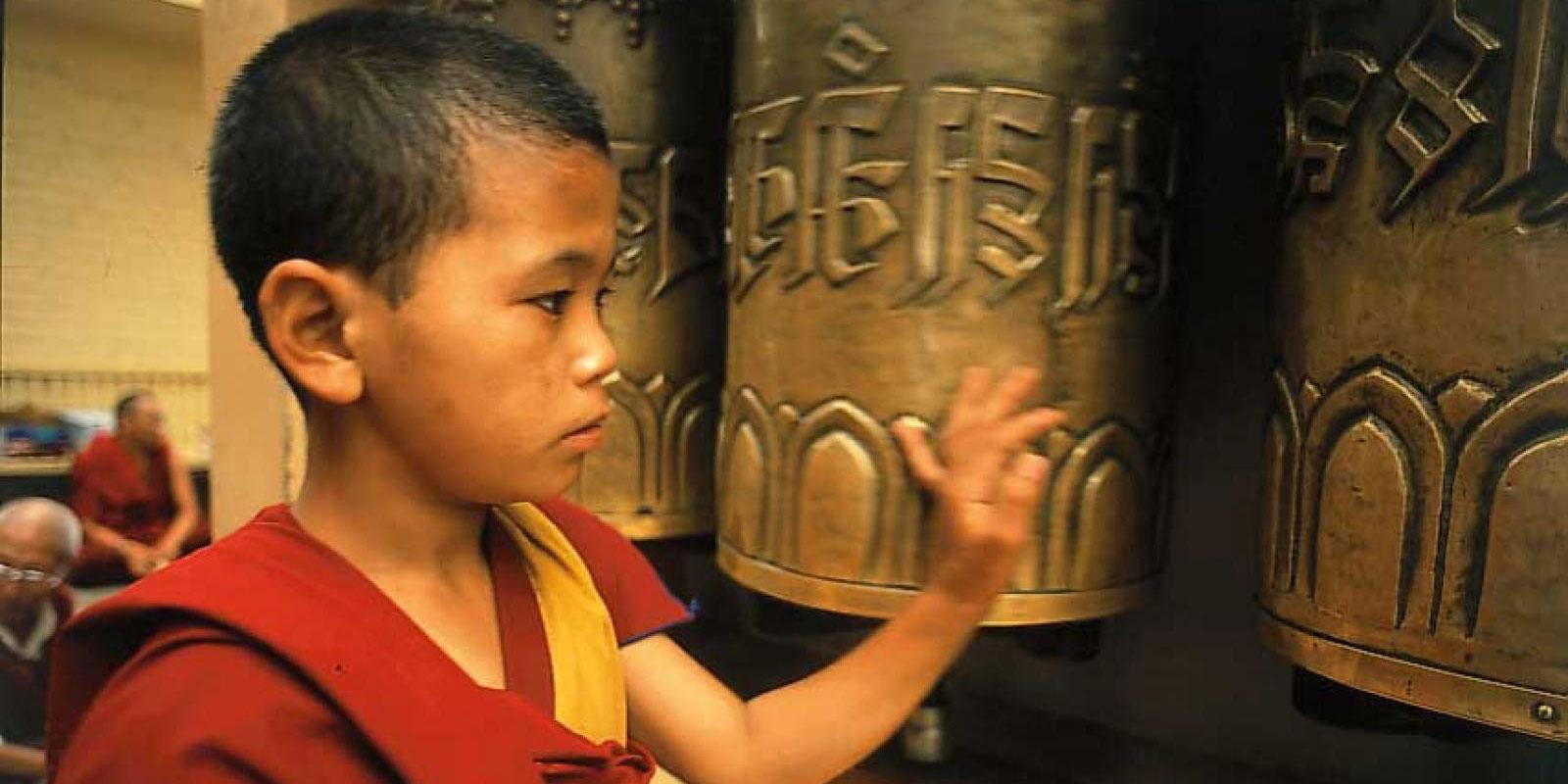
Jangchup has wanted to be a Buddhist monk since he was little. When the Dalai Lama’s own monastery needed new monks his parents finally allowed him to join.
Many Tibetan boys dream of being Buddhist monks, just as children in other countries may dream of being professional footballers or film stars. But for Tibetan children it’s not about being rich and famous. Living simply in a monastery and dedicating your life to Buddhism is the finest thing a Tibetan can do. Yet Jangchup’s parents have asked him to wait before deciding. Monks, for example, are not allowed to get married nor have children. They leave their family forever and get a new family in the monastery.
Surprising news
Jangchup is happy and full of anticipation when he says goodbye. But when he sees that his mum is trying to hold back tears, he also begins to cry. The journey to the monastery takes three days and the Buddhist monk who greets Jangchup has surprising news. “When the school term begins you must move to the Tibetan children’s village and go to school there,” says the monk. “You can come back to the monastery during school holidays and one weekend a month.”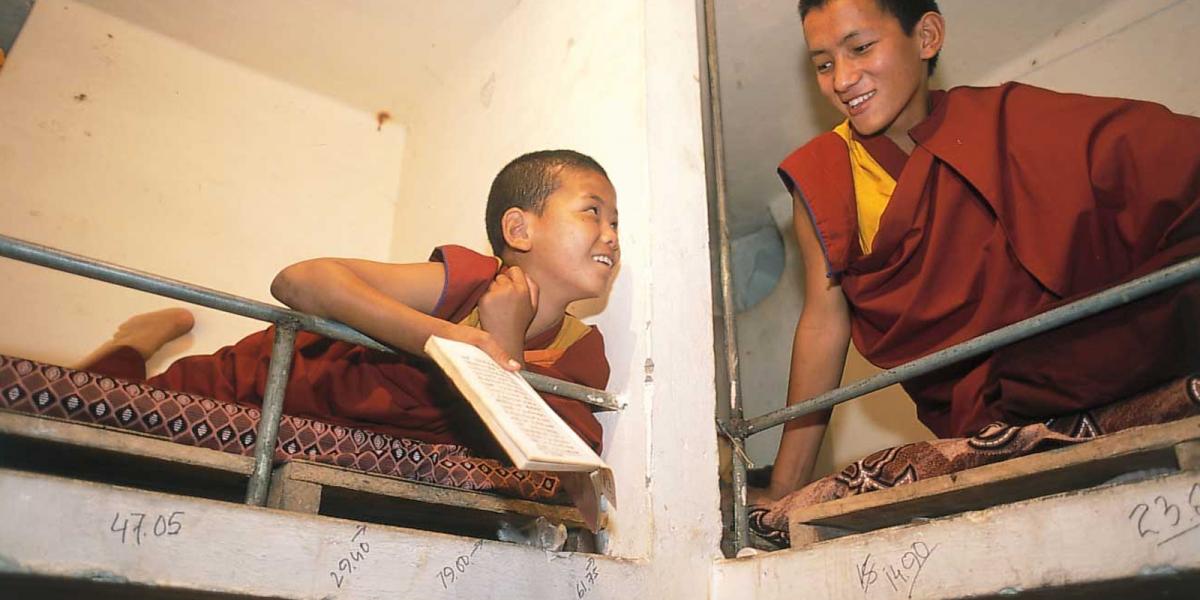
The monks used to go to school in the monastery, but now the Dalai Lama has decided that all young monks in his monastery should go to an ordinary Tibetan school. He thinks that modern monks need to learn subjects such as science and English. Besides, children who have chosen a monk’s life may change their minds when they are older. They must then be able to get an ordinary job. The first night in the monastery Jangchup shares a monk’s cell with Thai, another young boy. The new friends talk in the dark for a long time before going to sleep. Jangchup misses his family – especially his mother – for the first time. “But I don’t regret anything”, he says to Thai.

His hair grows
When the school term begins Jangchup moves to the Tibetan children’s village. Monks aged 7 to 16 live here together in a family home. In the monastery they have shaved heads and monks’ robes but in the children’s village they let their hair grow and they wear trousers, jumpers and a school uniform.Once a month, Jangchup puts his monk’s robe on and goes to the monastery to study Buddhism and get to know life in the monastery. After one year in the monastery and the children’s village Jangchup is certain that he has made the right decision. “I will be a monk until I die,” he says determinedly.

Jangchup’s new home
Jangchup is a monk in the Namgyal monastery. It was created in Tibet in the 1700s and was located in the Potala Palace, which was also the Dalai Lama’s home. When the current Dalai Lama escaped to India the Namgyal monastery followed. Around 200 monks now live here and all dream of one day returning to Tibet and the Potala Palace.Jangchup, 13
Born in: Tibetan settlement in Orissa, India.Lives in: Tibetan children’s village in Dharamsala and Namgyal monastery.
Likes: Football. Studying Buddhism.
Favourite football player: Ronaldinho.
Admires: My teacher at the monastery. He is kind-hearted and knows a lot.
Feels sad: When I feel alone. Then I miss my family.
Laughs at: The Indian comedian Johnny Lever.
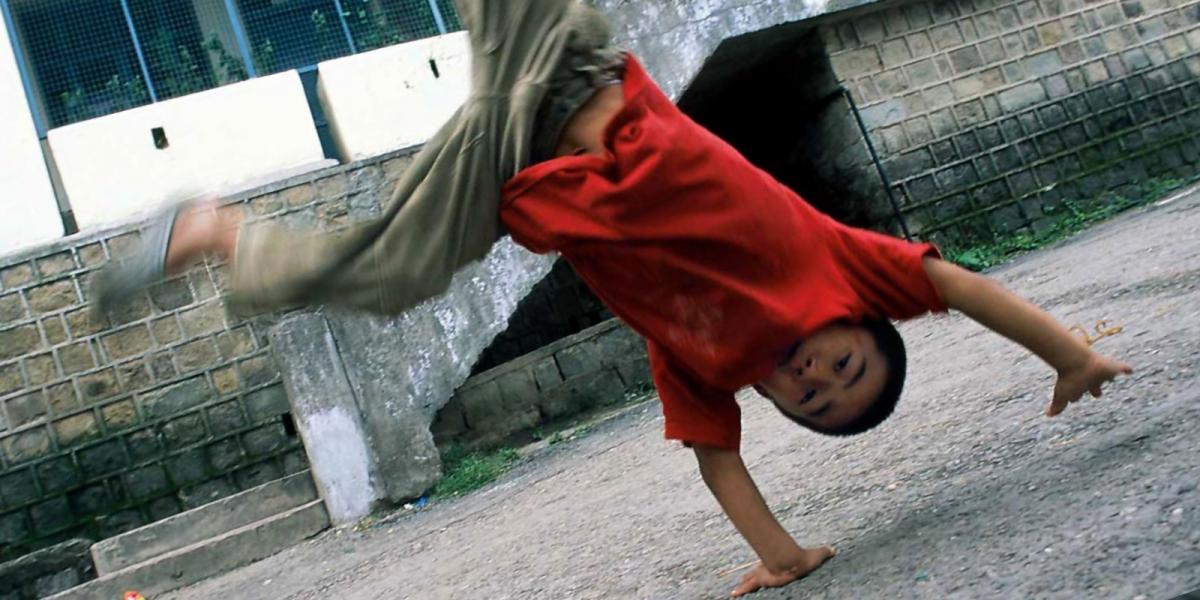
Man or mosquito?
Jigme, 7, lives with the other young monks in the children’s village. His parents left him at a monastery after the Dalai Lama identified him as a reincarnation of a Buddhist leader who died. “It was a great honour for the family” says Jigme, who likes to do cartwheels. Buddhists believe in reincarnation or transmigration, which means that when a person dies she is reborn in a new body. If you are reborn as a person or, for example, a mosquito depends on how you have lived. Rebirth doesn’t stop until you have reached Nirvana. According to the Buddhists your soul is then pure and can be united with the universe and all living things. In Nirvana you no longer feel sorrow, pain, suffering or desire.The youngest political prisoner?
Posters on the walls in the monk’s home in the children’s village display the words “Free the Panchen Lama”. He and the Dalai Lama are Tibet’s most important leaders. The previous Panchen Lama died in 1989, and six years later the boy he was thought to be reborn as, Gedhun Choekyi, was found. But then China abducted Gedhun and his family and at the same time said that a completely different boy was the “real” Panchen Lama. Today, no one knows where Gedhun is, but if he is alive he is 16 years old. “It makes me sad and angry that he has been locked away for nearly all of his life,” says Jangchup.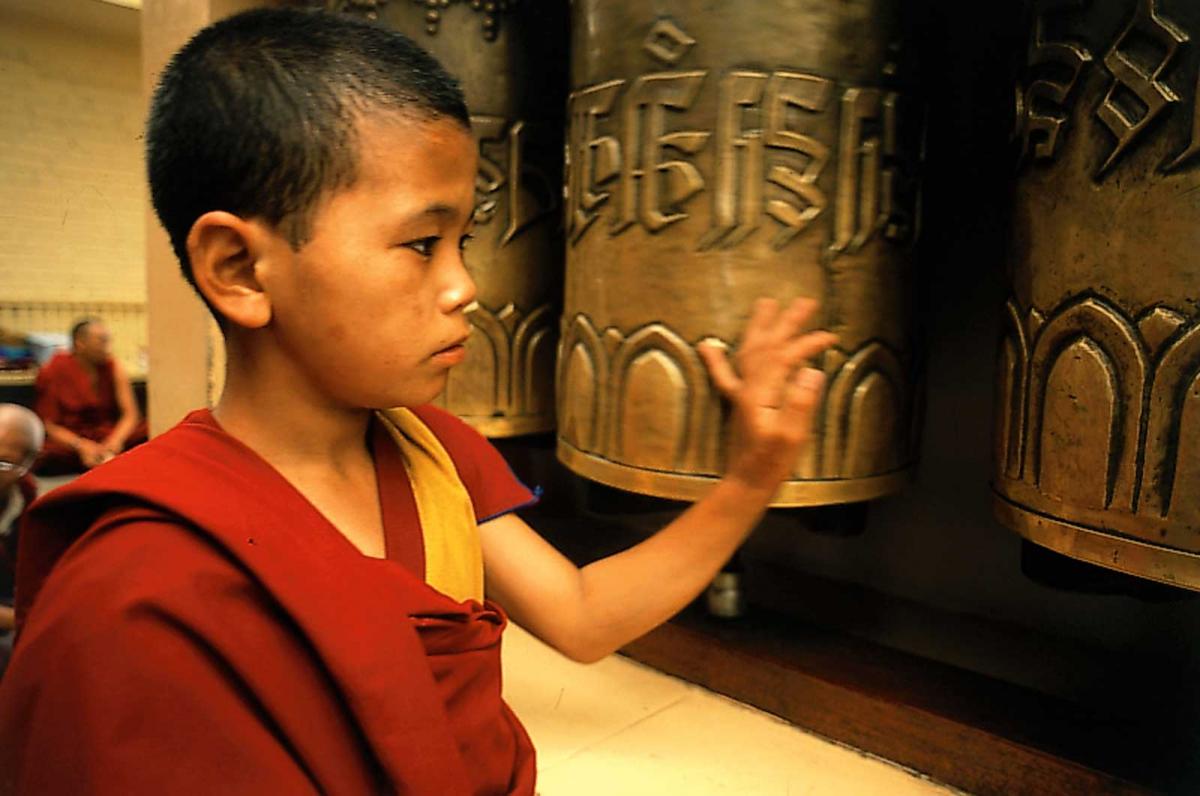
Tibet and Buddhism
Buddhism is one of the major world religions. It was started in India 2500 years ago by a man known as Buddha (“the enlightened”). There are around 500 million Buddhists across the world. Tibet converted to Buddhism in the 700s and was transformed from a warrior nation to a peaceful land. The most important thing in the Tibetan culture became having “a loving, sympathetic heart and a calm, clear mind”.Related stories
Långgatan 13, 647 30, Mariefred, Sweden
Phone: +46-159-129 00 • info@worldschildrensprize.org
© 2020 World’s Children’s Prize Foundation. All rights reserved. WORLD'S CHILDREN'S PRIZE®, the Foundation's logo, WORLD'S CHILDREN'S PRIZE FOR THE RIGHTS OF THE CHILD®, WORLD'S CHILDREN'S PARLIAMENT®, WORLD'S CHILDREN'S OMBUDSMAN®, WORLD'S CHILDREN'S PRESS CONFERENCE® and YOU ME EQUAL RIGHTS are service marks of the Foundation.



